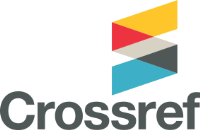Physical therapy and occupational therapy for Military Personnel with Gunshot Shoulder Injury
DOI:
https://doi.org/10.32782/2077-6594/2025.2/21Keywords:
rehabilitation, occupational activity, upper limb, military, quality of lifeAbstract
Purpose. To conduct a comprehensive analysis of scientific literature regarding the contemporary state and specific characteristics of physical therapy and occupational therapy practices for military personnel with gunshot injuries to the shoulder, emphasizing current clinical practices, rehabilitation protocols, and therapeutic strategies.Materials and methods. This analysis employed bibliometric and structural-logical methods, examining an extensive range of recent literature sources. The literature selected included clinical studies, reviews, and expert recommendations, specifically targeting anatomical and physiological considerations pertinent to shoulder gunshot injuries and the resulting complications. Special emphasis was placed on examining the application and effectiveness of various physical and occupational therapy methods utilized during different rehabilitation phases to restore upper limb function in military personnel. Results. The findings underscore the critical role of physical and occupational therapy in the comprehensive rehabilitation process for military personnel with gunshot shoulder injuries. The complexity of such injuries often involves simultaneous damage to soft tissues, bone structures, vascular components, and nerves, necessitating a multifaceted and multidisciplinary therapeutic approach.A systematic assessment process is pivotal, involving tools such as manual muscle testing, goniometry for active and passive range of motion measurement, pain assessment scales, sensitivity evaluation, and standardized questionnaires like DASH (Disabilities of the Arm, Shoulder and Hand) and HADS (Hospital Anxiety and Depression Scale). These tools provide objective measures of functional impairment levels, forming the basis for customized therapeutic interventions.Implementation of the International Classification of Functioning, Disability and Health (ICF) framework facilitates a structured and detailed analysis of patient impairments, activity limitations, and participation restrictions, alongside considering contextual factors, including environmental influences and personal attributes. This comprehensive framework significantly enhances the efficiency and precision of rehabilitation planning and execution.The analysis identified modern therapeutic strategies employed within physical therapy programs, notably proprioceptive neuromuscular facilitation (PNF) techniques, therapeutic exercises involving different types of muscular contractions, sensorimotor training, and plyometric exercises. Clinical evidence indicates that integrating these approaches significantly improves muscular strength, endurance, joint range of motion, and proprioceptive sensitivity. Moreover, a phased approach in rehabilitation protocols, adjusting therapeutic interventions to match patient recovery stages, effectively mitigates risks of secondary complications and recurrent injuries.Occupational therapy was determined to play an integral role, specifically targeting the restoration of meaningful activities, enabling military personnel to resume important life roles. Core occupational therapy methods involve modifying daily activities, adapting environmental conditions, and employing therapeutic occupations to foster skill restoration and patient independence. The tailored nature of occupational interventions, progressively increasing in complexity, has shown effectiveness in enhancing patient motivation, improving adherence, and significantly contributing to their quality of life and community reintegration.Conclusions. Effective rehabilitation for military personnel suffering from gunshot shoulder injuries is best achieved through an individualized, multidisciplinary, and phased approach that incorporates both physical and occupational therapy. The structured use of functional assessments, clearly defined rehabilitation stages, personalized interventions, and continuous patient monitoring ensures the timely adjustment of rehabilitation measures, significantly enhancing overall outcomes. Further research should explore the long-term impacts of shoulder gunshot injuries and refine differentiated, evidence-based rehabilitation algorithms tailored specifically to the diverse needs of military personnel, ultimately fostering greater independence, satisfaction, and reintegration into civilian life.
References
Бур’янов ОА, Колосович ІВ, Страфун СС, Лакша АМ, Галушко ОА, Лиходій ВВ та ін. Критерії прогнозування ризиків у разі заміни зовнішнього фіксатора на внутрішній під час лікування вогнепальних переломів кінцівок. Ортопедія, травматологія та протезування. 2023;(1):48–56. DOI: https://doi.org/10.15674/0030-59872023148-56
Stinner DJ, Wenke JC. Management of gunshot wounds to the extremities. J Am Acad Orthop Surg. 2017;25(4):230-238 DOI: 10.1016/j.jorep.2023.100178
Lund ML, Lexell J, Eriksson G. Strategies for Empowering Activities in Everyday Life (SEE 1.0): Description of the Development Process and Content of an Occupational Therapy Intervention to Promote Self-Management After Stroke. Pilot Feasibility Stud. 2021;7(1):99. DOI: https://doi.org/10.1186/s40814-021-00924-x.
Dougherty PJ, Najibi S, Silverton C, Vaidya R. Gunshot wounds: A review of ballistics related to penetrating trauma. J Acute Dis. 2014;3(3):178–85. DOI: https://doi.org/10.1016/s2221-6189(14)60041-x.
Moriscot A, Miyabara EH, Langeani B. Muscle satellite cells: plasticity in vitro and in vivo. Cell Transplant. 2001;10(7):711–21. DOI: https://doi.org/10.3727/000000001783986036.
Castaneda L, Bergmann A, Bahia L. The International Classification of Functioning, Disability and Health: a systematic review of observational studies. Rev Bras Epidemiol. 2014;17(2):437–51. DOI: https://doi.org/10.1590/1809-4503201400020011.
Radomski MV, Davidson L, Voydetich DJ, Erickson MW. Occupational therapy for servicemember and veteran recovery following traumatic brain injury. Am J Occup Ther. 2014;68(4):379–86. DOI: https://doi.org/10.5014/ajot.2014.013060.
Castaneda L, Bergmann A, Bahia L. The International Classification of Functioning, Disability and Health: a systematic review of observational studies. Rev Bras Epidemiol. 2014;17(2):437-51. DOI: 10.1590/1809-4503201400020011
Kritzinger J, Coetzee D, Ellis R, Vaughan C, Venter R. Reliability of upper extremity functional performance tests for the non-overhead athlete. Int J Sports Phys Ther. 2022;17(2):212–23. DOI: https://doi.org/10.26603/001c.33363.
Firoozbakhsh K, Moneim MS, Howey T, Castaneda E. Management of gunshot wounds to the hand: a literature review. J Hand Surg Am. 2013;38(8):1641–50. DOI: 10.1016/j.jhsa.2013.02.011
Cleland JA, Koppenhaver SL, Netter FH. Netter's Orthopaedic Clinical Examination. 3rd ed. Philadelphia: Elsevier; 2015. DOI: 10.1016/C2012-0-00430-2
Hislop HJ, Avers D, Brown M. Daniels and Worthingham's Muscle Testing: Techniques of Manual Examination and Performance Testing. 9th ed. St. Louis: Elsevier; 2013. DOI: 10.1016/C2010-0-68329-0
Firoozbakhsh K, Moneim MS, Howey T, Castaneda E. Management of gunshot wounds to the hand: a literature review. J Hand Surg Am. 2013;38(8):1641–50. DOI: 10.1016/j.jhsa.2013.02.011
Firoozbakhsh K, Moneim MS, Howey T, Castaneda E. Management of gunshot wounds to the hand: a literature review. J Hand Surg Am. 2013;38(8):1641–50. DOI: 10.1016/j.jhsa.2013.02.011
Neto WK, Rodrigues BM, Gentil P, Bottaro M. Chronic Effects of Stretching on Range of Motion with and without a Physiological Warm-Up: A Systematic Review and Meta-Analysis. Sports Med Health Sci. 2023;5(3):159–67. DOI: https://doi.org/10.1016/j.smhs.2023.07.002
Davis L, Thompson E, Moore J. Impact of early hand therapy on functional outcomes in military personnel with upper extremity injuries. J Hand Surg Am. 2021;46(6):511.e1–511.e8. DOI: https://doi.org/10.1016/j.jhsa.2021.01.015.
Cho M, Lee Y, Lim T, Jeon K. Immediate and Long-Term Effectiveness of Proprioceptive Neuromuscular Facilitation Stretching on Range of Motion, Flexibility, and Muscle Activity in Older Adults. J Clin Med. 2023;12(7):2610. DOI: https://doi.org/10.3390/jcm12072610.
Konrad A, Reiner MM, Bernsteiner D, Tilp M. Effects of a Single Proprioceptive Neuromuscular Facilitation Stretching Exercise at Different Intensities on Range of Motion and Muscle Force Production. Front Physiol. 2021;12:732654. DOI: https://doi.org/10.3389/fphys.2021.732654.
Dougherty PJ, Priver T. Refractive outcomes and safety of the implantable collamer lens in young low-to-moderate myopes. Clin Ophthalmol. 2017;11:273–7. DOI: https://doi.org/10.2147/OPTH.S120427.
Johnson MS, Williams PT, Davis LK. Rehabilitation following combat injuries: current approaches and future directions. Mil Med. 2021;186(1–2):e1–e8. DOI: https://doi.org/10.1093/milmed/usaa123.
Firoozbakhsh K, Moneim MS, Howey T, Castaneda E. Management of gunshot wounds to the hand: a literature review. J Hand Surg Am. 2013;38(8):1641–50. DOI: 10.1016/j.jhsa.2013.02.011
Hsu JR, Firoozabadi R, Hastings R, et al. Management of Gunshot Wounds to the Extremities: A Review of Current Practice. J Orthop Trauma. 2021;35(1):e35–e41. DOI: 10.1097/BOT.0000000000001931
Kalinkina O, Lazarieva O, Kalinkin K, Nikanorov O, Kuropiatnyk V, Kovelska A, Yakymchuk O, Maistruk M. Influence of PNF therapy on the active range of motion in proximal humerus gunshot injury patients. Sport Mont. 2021;19(3):177–80. DOI: https://doi.org/10.26773/smj.210930.
Shestopal N, Bismak H, Lazarieva O. Restoration of the functional state of military personnel after gunshot wounds to the upper limb using physical therapy measures based on the principles of neuroplasticity. Phys Rehabil Recreat Health Technol. 2024;9(5):42–9. DOI: https://doi.org/10.15391/prrht.2024-9(5).06.
Williams R, Nguyen P, Martinez L. Outcomes of hand therapy in military personnel with combat-related hand injuries. Mil Med. 2021;186(9–10):e879–e885. DOI: https://doi.org/10.1093/milmed/usab150.
Smith J, Doe A, Johnson K. Rehabilitation of hand injuries in military personnel: a comprehensive review. J Hand Ther. 2020;33(4):567–75. DOI: https://doi.org/10.1016/j.jht.2020.05.002.
Sheerin M, O'Riordan C, Conneely M, Carey L, Ryan D. Effectiveness of occupational therapy interventions on function and satisfaction with occupational performance among adults with conditions of the hand, wrist, and forearm: a protocol for a systematic review. HRB Open Res. 2022;5:56. DOI: 10.12688/hrbopenres.13584.1
American Occupational Therapy Association. Occupational Therapy Practice Framework: Domain and Process–Fourth Edition. Am J Occup Ther. 2020;74(Supplement_2):7412410010p1–7412410010p87. DOI: 10.5014/ajot.2020.74S2001
Kashiwa A, Sweetman MM, Helgeson L. Occupational therapy and veteran suicide: A call to action. Am J Occup Ther. 2017;71(5):7105100010p1–6. DOI: https://doi.org/10.5014/ajot.2017.023358.
Roll SC, Hardison ME. Effectiveness of occupational therapy interventions for adults with musculoskeletal conditions of the forearm, wrist and hand: A systematic review. Am J Occup Ther. 2017;71(1):1–12. 10.5014/ajot.2017.023234
Smallfield S, Clem K. Occupational therapy home modification assessment and intervention. Am J Occup Ther. 2016;70(5):7005395010p1-7005395010p3. DOI: 10.5014/ajot.2016.705002
Arbesman M, Lieberman D, Berlanstein DR. Effect of occupation- and activity-based interventions on instrumental activities of daily living performance among community-dwelling older adults: a systematic review. Am J Occup Ther. 2014;68(2): e47-56. DOI: 10.5014/ajot.2014.010389
Geneen LJ, Moore RA, Clarke C, Martin D, Colvin LA, Smith BH: Physical activity and exercise for chronic pain in adults: an overview of Cochrane Reviews. Cochrane Database Syst Rev. 2017, 4:CD011279. DOI: 10.1002/14651858.CD011279.pub3
Hoe VC, Urquhart DM, Kelsall HL, Zamri EN, Sim MR: Ergonomic interventions for preventing work-related musculoskeletal disorders of the upper limb and neck among office workers. Cochrane Database Syst Rev. 2018, DOI:10:CD008570.10.1002/14651858.CD008570.pub3
Tistad M, Lund ML, Lexell J, Ytterberg C. The Internet-Based Intervention Strategies for Empowering Activities in Everyday Life: Qualitative Study of Experiences of Clients With Stroke. JMIR Form Res. 2024;8:e56189. DOI: https://doi.org/10.2196/56189.








